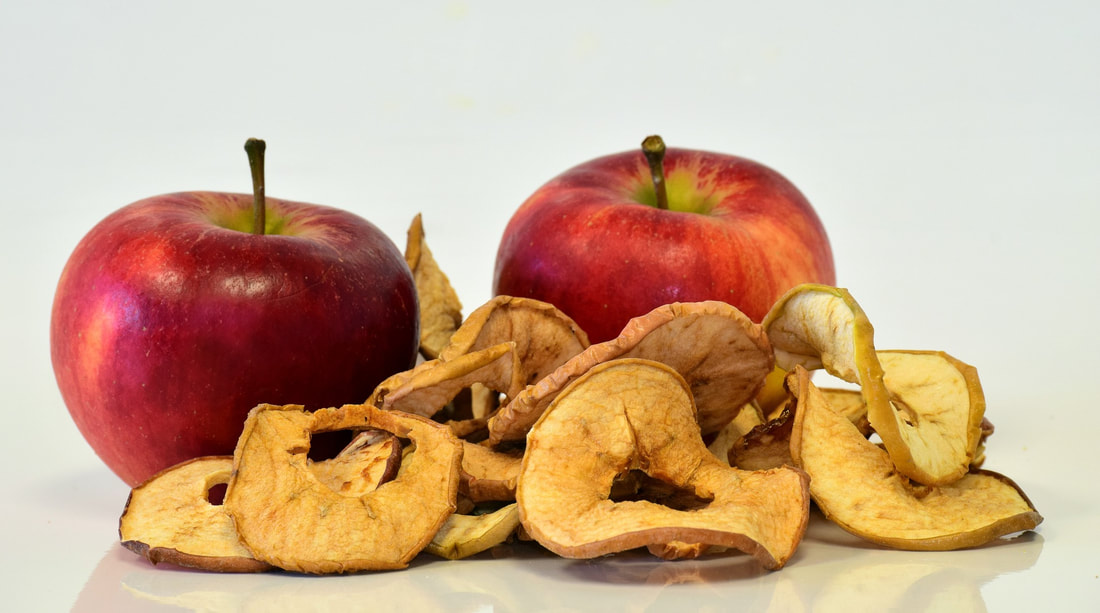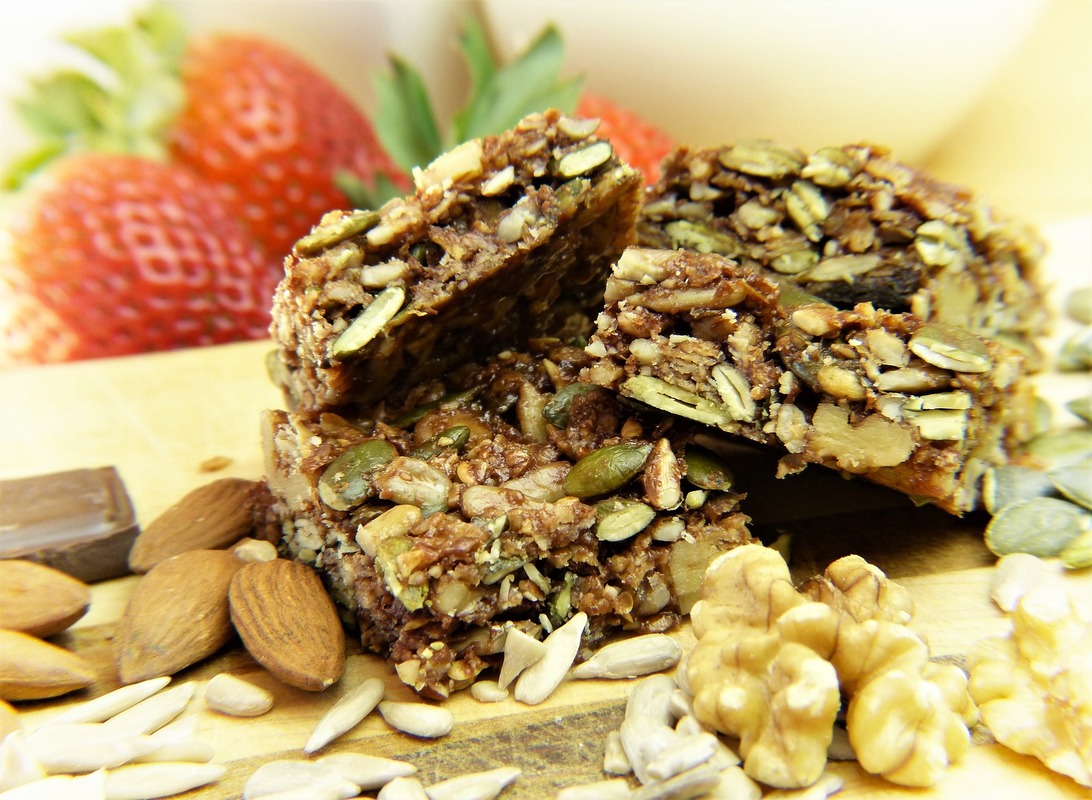|
Depending on the ingredients, these can provide some fiber, vitamins and minerals, but many are just candy in disguise! Fruit leathers are a better bet, but can contain high concentrations of pesticides(1), so choose organic where possible. Look for ones made from whole fruit (not concentrates) and free from additives. To give the numbers below some context, the American Academy of Pediatrics recommends limiting kids' (aged 2-18 years) added sugar intake to no more than 25 grams per day (~6 tsp). In the UK these recommendations are broken down by age, with 4-6 year olds limited to 19 g per day, and 7-10 year olds having no more than 24g per day. The UK guidelines indicated that babies and toddlers (under 4 years old) should avoid added sugars altogether, while the US suggests none for those under 2 years old. If made from real fruit, the sugar in the items below is not considered 'added', but the use of fruit juice concentrates in some products is a grey area - the FDA does consider this 'added sugar' in most cases. Fruit snacks
Fruit leathers
Other options!
0 Comments
A few clients have recently asked me for my favorite brands of various kids’ snacks, so I thought I’d put together a few lists for you all. A short rationale is included for those who want to know why, and also to help you make your own choice at the store, because this list is by no means exhaustive. For those of you who don’t have the time, I’ve color-coded the brands so you can simply skip ahead and get on with your day - green are your best bets! Let’s start with a reminder that the primary reasons we feed our kids are 1) to provide fuel to get them through the day, and 2) to provide adequate nutrients for them to grow and develop well over time. They have little stomachs (about the size of their fist) and short attention spans, so we can expect them to need refueling every couple of hours, typically with three meals and two snack times over the course of a day. Ideally, snack time would be a nutrient-dense mini-meal, with a balance of carbs (for energy) protein (for growth) and fats (for brain development). And, ideally, these would be from minimally processed whole food sources: whole grains, fruits and vegetables for the carbs, and nuts, seeds, beans, cheese, yogurt and eggs for the fats/proteins. The reason for this is that minimally processed foods contain the most fiber, water, vitamins and minerals, and this is what our children’s bodies need to operate and develop optimally. Processed foods tend to strip these things out and replace them with sugar, salt, and artificial additives. A simple whole food snacking plan is to offer a fresh fruit or vegetable at every snack, paired with a protein source and/or whole grain. For example, carrots and hummus, apple slices and cheese, celery sticks with peanut butter, yogurt and berries, chia pudding and mango, almonds and a piece of fruit, 100% wholewheat toast with nut/seed butter and a clementine, and so on - the combinations are endless! This is also much more cost-effective than packaged snacks. Providing these types of snacks is easier at home; when we are packing snacks for school or outings, it isn’t as easy to offer these foods. Enter packaged snacks! Every kid’s favorite way to fuel up, and a welcome shortcut for most parents. However, as parents, we still want to find that balance between convenience and nutrition, and it’s a minefield out there. So, without further ado, I will offer my suggestions in each of the main snacking categories, to help you navigate the sugar traps, sodium bombs, and artificial additives! Image by Silvia from Pixabay Granola bars (AKA cereal bars, chewy bars) can be a good source of whole grains, fiber and some micronutrients - watch for added sugar and artificial ingredients. Brands with nuts, seeds and a variety of grains will provide more fiber, protein and minerals. Look for less than 25% sugar by weight, 3+ grams of fiber, and 3+ grams of protein per bar. Smaller (24g) bars are a good size for preschoolers; bigger kids might need a bigger bar, or a second snack item to keep them going. Kelloggs Nutrigrain bars: 37g bar, 13g sugar (35% by weight), 1g fiber, 2g protein. Over 40 ingredients, around seven of which are sugar under different names, and GMO corn syrup and soy. Highly processed; synthetic vitamins and minerals added. Quaker Chewy bars: 24g bar, 7g sugar (29% by weight), 1g fiber, 1g protein. Contains 40+ ingredients, GMO corn syrup and soy, artificial flavors and preservatives. Trader Joe’s chewy chocolate chip bar: 24g bar, 8 grams of sugar (33% by weight), 1g fiber, 2g protein. Lots of ingredients, many of which are sugar sources, but all are organic. Smaller bar is a good size for smaller kiddos. CLIF Kid Z bars: 36g bar, total of 10g sugar (28% by weight), 2g fiber, 2g protein. More processed ingredients than some other options, lots of different sugar sources, but organic/non-GMO and no corn syrup. Nature Valley Crunchy Oats & Honey: 42g bar, 11g sugar (26% by weight), 2g fiber, 1g protein. 10 relatively simple ingredients, three of which are sugar; does contain GM soy. Bigger bar, better for bigger kids. Made Good granola bars: 24 bar, 6 grams of sugar (20% by weight), 1-2g fiber, 2g protein depending on which flavor. Quite a few ingredients, but they include a vegetable extract blend which contributes some natural food sources of vitamins and minerals. Good for little kids due to smaller size. Kind Healthy Grains: 35g bar, 6-8g of sugar (~20% by weight), 2-3g of fiber, and 2-3g of protein, depending on the flavor. This bar has recognizable ‘real food’ ingredients (although there are 20 of them, and 5 are different sugar sources). Mixture of whole grains (buckwheat, amaranth, quinoa, millet, oats, rice) contribute some micronutrients and diversity. 88 Acres seed bar: 45g bar, 7-10g sugar (~18% by weight), 3g fiber, 5-7g protein, depending on flavor. Double the weight of some other bars, but more nutrients with less sugar proportionately (AKA more nutrient dense). Lots of micronutrient-rich seeds add important minerals. A more substantive option, good for bigger kids (and adults). Kind Nut bars: 40g bar, 5-9g sugar (12-22% by weight), 3-7g fiber, 4-6g protein. Whole nuts, and a fairly short list of simple ingredients. Packed with fiber and protein. Substantive enough to keep bigger kids full (and also sold as ‘minis’ for smaller kids). Non-GMO, and a good source of healthy fats. Health Warrior Chia bars: 25g bar, 3g sugar (12% by weight), 4-5g fiber, 3g protein. Packs a nutritional punch for a smaller bar and the lowest in sugar. Made with nuts, seeds and whole grains; rich in essential fatty acids, as well as the fiber and protein, and non-GMO. Easy homemade option: trail mix
Trail mix is essentially a deconstructed granola bar. Consider mixing together some nuts, seeds, and unsweetened dried fruits (and perhaps a sprinkle of dark chocolate chips) for a DIY trail mix: you can make a batch in minutes and portion it out into mini reusable snack pots for grab-and-go convenience. Try this combo:1 cup of almonds, 2/3 cup of dried unsweetened cherries, 1/2 cup of pumpkin seeds, and 1/3 cup of semisweet chocolate chips in a large bowl. This is much more cost effective than buying bars, as well as more nutritious! A 1/4 cup serving (35g) of the trail mix above has 7g of sugar (20% by weight), 3g of fiber, and 5g of protein, plus offers a spectrum of minerals like iron, calcium, copper, zinc and magnesium. |
AuthorHi, I'm Amy. I'm a nutritionist in the DC area, working with clients of all ages, focusing on prenatal and pediatrics. I'm all about straightforward, evidence-based health & wellness advice - because life/parenting in the modern world is complicated enough! Categories
All
November 2022
|
Seed to Sapling Nutrition


 RSS Feed
RSS Feed